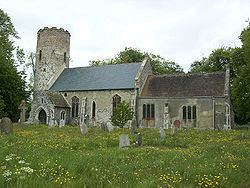Population 1,150 (2011) Civil parish Burgh Castle Area 6.76 km² | OS grid reference TG476049 Sovereign state United Kingdom Local time Tuesday 2:15 AM | |
 | ||
Weather 4°C, Wind W at 13 km/h, 86% Humidity | ||
Explore burgh castle norfolk
Burgh Castle is a village and civil parish in the English county of Norfolk. It is situated on the east bank of the River Waveney, some 6 km west of Great Yarmouth and within the Broads National Park. The parish was part of Suffolk until 1974.
Contents
- Explore burgh castle norfolk
- Map of Burgh Castle Great Yarmouth UK
- Burgh castle norfolk england
- Roman Fort
- Other
- References
Map of Burgh Castle, Great Yarmouth, UK
Burgh castle norfolk england
Roman Fort
Burgh Castle is the site of one of several Roman forts constructed to hold cavalry as a defence against Saxon raids up the rivers of the east and south coasts of southern Britain (the Saxon Shore). Possibly this was Gariannonum, a name that appears in a single source; the identification was once thought secure, but is now thought doubtful by specialists. The fort is a very large rectangle with three of the tall massively built walls still extant; the fourth fell into what was once an estuary but is now a marsh. Breydon Water is all that is left of the estuary this fort once overlooked. The castle is owned by the Norfolk Archaeological Trust, with the walls in the care of English Heritage. The site is freely open to the public.
Other
Since William Camden, Burgh Castle has been suggested as the site of Cnobheresburg, the unknown place (a castrum or fort) in East Anglia, where in about 630 the first Irish monastery in southern England was founded by Saint Fursey as part of the Hiberno-Scottish mission described by Bede. Historians find many arguments against this location, but are unable to agree on a better one. The Roman fort at Burgh Castle was excavated by Charles Green during 1958-61. A detailed report by Norfolk Museums Service in 1983 (East Anglian Archaeology 20) shows that there was never any monastic settlement in Burgh Castle itself.
The church of Burgh Castle, St Peter and St Paul is one of 124 existing round-tower churches in Norfolk.
The civil parish of Burgh Castle has an area of 6.76 km2 and in the 2001 census had a population of 955 in 376 households. For the purposes of local government, the parish today falls within the district of Great Yarmouth. However prior to the Local Government Act 1972, the parish was within Lothingland Rural District in Suffolk.
The House of Burke take the original form of their surname, de Burgh, from the area.
